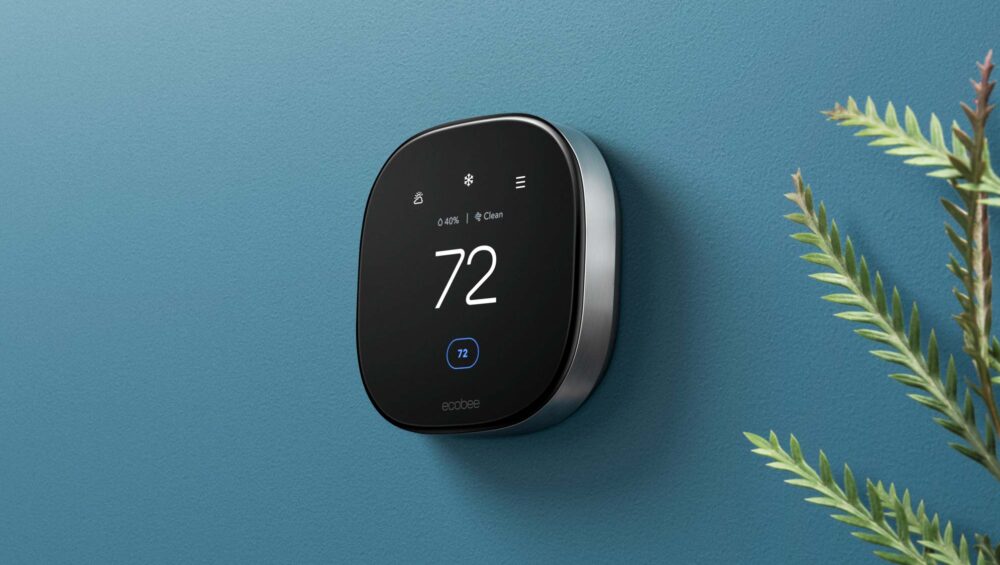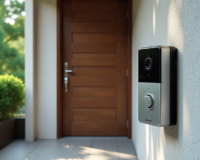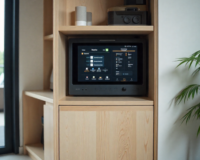Smart thermostat technology is among the most advanced features available for heating and cooling systems, showcasing how technological innovations extend beyond just smartphones. It’s a technology that everyone can benefit from.
Many new ducted heating and cooling systems come with thermostats that offer some smart capabilities. However, these built-in options often lack the premium features and efficiency of third-party smart thermostats.
Leading third-party brands like Nest, Honeywell, Sensi, and Ecobee are industry leaders. But the question remains: are they compatible with all ducted heating systems in Australia? How do built-in thermostats compare to third-party options? And if your goal is to save energy and money, which option is best?
If you’re curious about how smart thermostats function and their compatibility with HVAC systems, here is what you need to know about the top smart thermostats on the market.
What Are Smart Thermostats?
Smart thermostats are advanced, internet-connected devices that allow homeowners to control their home’s heating, ventilation, and air conditioning (HVAC) systems remotely via smartphones, tablets, or computers. Unlike traditional thermostats, which require manual adjustments, smart thermostats learn user preferences and schedules, automatically adjusting the temperature to optimize comfort and efficiency.
What You Need to Know About Smart Thermostats in Australia
Before diving into the world of smart thermostats in Australia, there’s a crucial detail to consider: they may not be fully compatible with Australian systems.
Compatibility Issues
Popular products like Ecobee and Nest are primarily designed for American and European markets. Consequently, many online tutorials and guides on installing these smart thermostats are tailored for American homes, where the wiring standards differ from those in Australia.
Wiring Differences
American smart thermostats often require a C (common) wire for installation. However, Australian homes typically use a different wiring setup, which includes:
- Active wires (brown)
- Neutral wire (blue/black)
- Earth/ground wire (green/yellow)
The absence of a common wire in Australian wiring systems can pose a significant challenge for installing many smart thermostats.
Heating System Compatibility
Additionally, some thermostats may be designed specifically for certain types of heating systems, such as hydronic heating, which may not be common in Australia.
To avoid potential issues, it’s crucial to:
- Thoroughly research the smart thermostat you are interested in.
- Consult with a licensed electrician or technician before purchasing and attempting installation. They can provide insights into any additional work required and ensure compatibility with your home’s wiring and heating system.
By taking these steps, you can ensure a smoother installation process and avoid unforeseen complications.
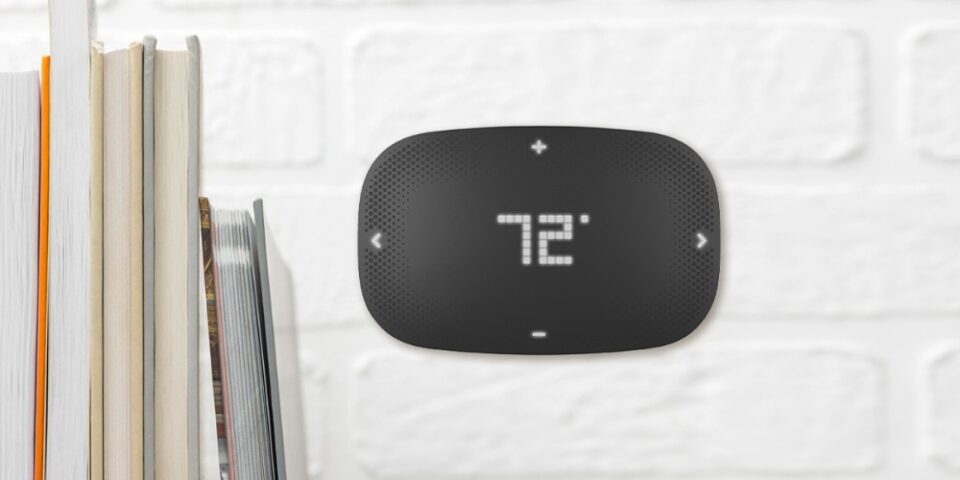
Types of Thermostats
Thermostats are essential devices that regulate the temperature of your heating, ventilation, and air conditioning (HVAC) systems. They come in various types, each offering different levels of control, convenience, and efficiency. Here, we’ll explore the main types of thermostats available, highlighting their features and benefits.
1. Mechanical Thermostats
Mechanical thermostats are the most basic type of thermostat. They use physical components such as bimetallic strips or gas-filled bellows to measure temperature and control the HVAC system.
Features
- Simple and Inexpensive: Easy to use and typically cost less than other types.
- Manual Control: Requires manual adjustment to change the temperature setting.
Benefits
- Durability: Fewer electronic components mean they are less likely to fail.
- No Power Required: Operates without needing a power source, making them reliable during power outages.
2. Programmable Thermostats
Programmable thermostats allow users to set a schedule for their HVAC systems, automatically adjusting the temperature at different times of the day and week.
Features
- Customizable Schedules: Can be programmed for different times and days, providing flexibility and convenience.
- Energy Savings: By setting lower temperatures when you’re not home, you can save on energy costs.
Benefits
- Improved Comfort: Ensures your home is at the desired temperature when you wake up or return home.
- Cost-Effective: Can significantly reduce energy bills with proper programming.
3. Digital Non-Programmable Thermostats
Digital non-programmable thermostats feature a digital display but lack programmable scheduling. They provide precise temperature control with easy-to-read displays.
Features
- Digital Display: Shows the current temperature and setpoint, making it easy to read and adjust.
- Simple Controls: Offers straightforward temperature adjustment without complicated settings.
Benefits
- Accuracy: Provides more precise temperature control compared to mechanical thermostats.
- Ease of Use: Simple interface makes it user-friendly for all ages.
4. Wireless Thermostats
Wireless thermostats connect to your HVAC system and communicate via wireless signals. They offer flexibility in placement and can be controlled remotely.
Features
- Remote Sensors: Can include multiple sensors placed in different rooms for more balanced temperature control.
- Wireless Control: Allows you to control the thermostat from a central hub or mobile device.
Benefits
- Flexible Placement: No need to run wires through walls, making installation easier.
- Enhanced Comfort: Sensors in various rooms ensure consistent comfort throughout the home.
5. Smart Thermostats
Smart thermostats are the most advanced type, integrating with Wi-Fi and smart home systems. They offer features like learning your schedule, remote control via smartphone apps, and integration with other smart devices.
Features
- Learning Capabilities: Can learn your routines and preferences, adjusting the temperature automatically for maximum efficiency.
- Remote Access: Control your thermostat from anywhere using a smartphone or tablet.
- Smart Home Integration: Works with systems like Google Home, Amazon Alexa, and Apple HomeKit for voice control and automation.
Benefits
- Energy Efficiency: Optimizes heating and cooling based on your schedule and habits, leading to significant energy savings.
- Convenience: Provides unparalleled control and convenience with advanced features and integrations.
- Data Insights: Offers insights into your energy usage and suggestions for further savings.
6. Zoned Thermostats
Zoned thermostats are part of zoned HVAC systems, which divide your home into different zones, each with its own thermostat. This allows for individualized temperature control in different areas of your home.
Features
- Multiple Zones: Controls heating and cooling in different zones independently.
- Customizable Comfort: Tailors the climate in each zone to the preferences of the occupants.
Benefits
- Energy Savings: Avoids heating or cooling unoccupied areas, reducing energy consumption.
- Enhanced Comfort: Provides personalized comfort for different rooms or zones.
The Best Smart Thermostat Features
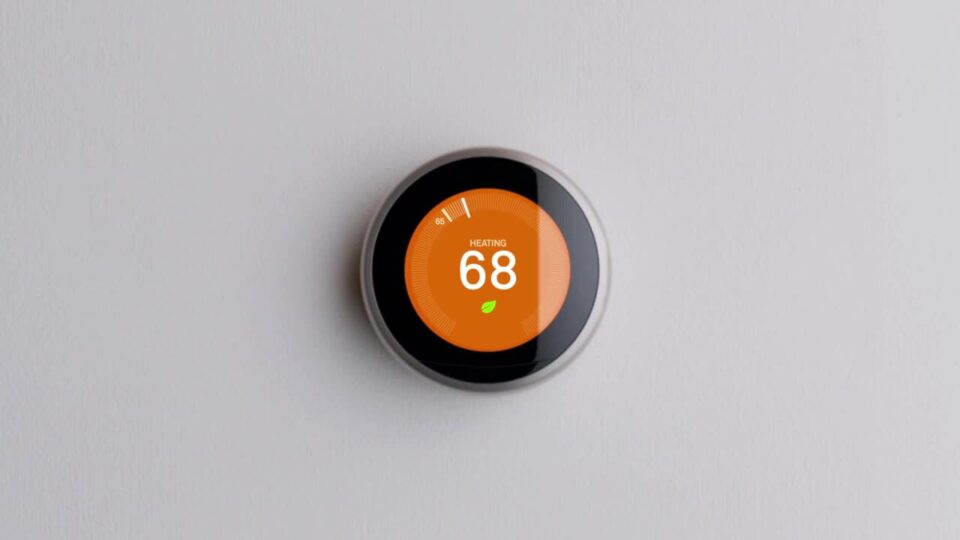
When evaluating smart thermostats, it’s important to recognize that not all models are created equal. While they may all aim to provide better control and efficiency, the level of convenience and range of features can vary significantly between different brands and models.
Efficiency: The Core Benefit
The primary advantage of any thermostat, particularly those enhanced with advanced technology, lies in its efficiency. Modern smart thermostats are designed to optimize both energy consumption and overall efficiency. This not only reduces your carbon footprint but also lowers your heating and cooling costs, making them a wise investment for any homeowner.
Connectivity: Wi-Fi and Bluetooth
Most contemporary smart thermostats are equipped with Wi-Fi capabilities, allowing seamless integration with various smart home ecosystems. Some models also offer Bluetooth connectivity, providing an additional layer of flexibility. With Wi-Fi connectivity, smart thermostats can easily connect to popular smart home systems such as Google Home, Amazon Echo & Alexa, and Apple HomeKit. This integration enables you to control your home’s climate using a connected app on your smartphone or other smart devices, and also via voice commands when you’re at home.
Distinct Features of Premium Models
The specific features available in smart thermostats can vary depending on the model and brand. For instance, while both the Nest and ecobee thermostats are highly regarded, they each offer unique functionalities. However, in premium smart thermostat models, you can typically expect to find the following advanced features:
- Smart Sensors: These sensors detect temperature variations in different rooms, identifying hot or cold spots and adjusting the temperature accordingly to ensure consistent comfort throughout the home.
- Built-in Smart Home Capabilities: Premium models often come with built-in voice control and streaming integration, allowing you to manage your thermostat and other smart home devices using voice commands.
- Smartphone and App Controls: Remote access via smartphone apps enables you to control your thermostat from anywhere, providing convenience and flexibility in managing your home’s climate.
- Humidity Sensors: Advanced smart thermostats include humidity sensors that monitor and adjust indoor humidity levels, enhancing comfort and preventing issues like dry skin and respiratory problems.
- 7-Day Programming and Customizable Temperature Schedules: This feature allows you to set different temperatures for each day of the week, optimizing energy use and ensuring your home is always at the desired temperature.
- Adaptive Learning: Smart thermostats can learn your routine and preferences, creating personalized schedules that maximize efficiency and comfort.
- System Pausing: Some models can detect when doors or windows are open and pause the HVAC system to prevent energy waste.
- Intuitive, Full-Color Displays: Modern displays provide clear, easy-to-read information and simple navigation, enhancing the user experience.
Read more: The Best Smart Sensors for Alexa, HomeKit, and SmartThings
Why Smart Thermostats Are Worth the Investment
Smart thermostats offer a range of benefits, making them a valuable addition to any home with a ducted air conditioning system. Whether you have gas ducted heating, reverse cycle units, or evaporative cooling, smart thermostats provide year-round comfort and efficiency.
Year-Round Comfort
With a smart thermostat, your HVAC system can reach the desired temperature before you even get out of bed in the morning or arrive home from work in the evening. This ensures that your home is always at a comfortable temperature when you need it, without wasting energy when it’s not required.
Energy and Cost Savings
One of the most significant benefits of smart thermostats is the potential for energy and cost savings. Independent studies conducted on American households using the Nest Learning Thermostat showed savings of 10-12% on heating and 15% on cooling. This means that the investment in a smart thermostat can pay for itself within two years through reduced energy bills.
Similar savings can be expected in Australian homes. With the ability to control your HVAC system from your smartphone and the smart thermostat’s capability to learn your usage patterns, you can significantly reduce energy consumption. This leads to lower utility bills and a smaller environmental footprint.
Enhanced Control and Convenience
Smart thermostats offer unparalleled control and convenience. From your smartphone, you can adjust the temperature, set schedules, and monitor energy usage. This level of control ensures that your home is always at the perfect temperature, tailored to your preferences and schedule.
Multiple Thermostats for Larger Homes
For larger homes with extensive HVAC systems, using multiple smart thermostats can provide even greater control and efficiency. Each thermostat can manage different zones, ensuring that each area of your home is heated or cooled to the ideal temperature without wasting energy.
Embrace Modern Technology
While you might be accustomed to the simple on/off switch and temperature settings of your old thermostat, upgrading to a smart thermostat can bring numerous benefits. The advanced technology not only provides greater comfort and efficiency but also contributes to significant energy savings. Once you experience the convenience and cost-effectiveness of a smart thermostat, you’ll wonder how you managed without it.
Expert Assistance
If you’re uncertain about which smart thermostat is right for your needs, don’t hesitate to contact a local heating and cooling specialist. Professionals like DHS can help you make the best decision for long-term smart climate control with your HVAC system. They can provide personalized recommendations and ensure proper installation, maximizing the benefits of your new smart thermostat.
Popular Smart Thermostat Models
Several smart thermostat models have gained popularity due to their innovative features and reliability. Here are a few noteworthy options:
- Nest Learning Thermostat: Perhaps the most well-known smart thermostat, the Nest Learning Thermostat, uses advanced learning algorithms to create personalized schedules. It also integrates seamlessly with other smart home devices and provides detailed energy usage reports.
- Ecobee SmartThermostat: Ecobee’s SmartThermostat includes a built-in Alexa voice assistant, allowing for voice control and integration with other smart home systems. It also features room sensors to ensure balanced temperature throughout the home.
- Honeywell Home T9: The Honeywell Home T9 offers geofencing capabilities, room sensors, and compatibility with multiple smart home platforms. Its user-friendly app and reliable performance make it a popular choice among homeowners.
- Emerson Sensi Touch: Known for its affordability and ease of use, the Emerson Sensi Touch offers all the essential features of a smart thermostat, including remote access, energy reports, and compatibility with various smart home systems.
Read more: Top Smart Thermostats of 2024
Installing a Smart Thermostat
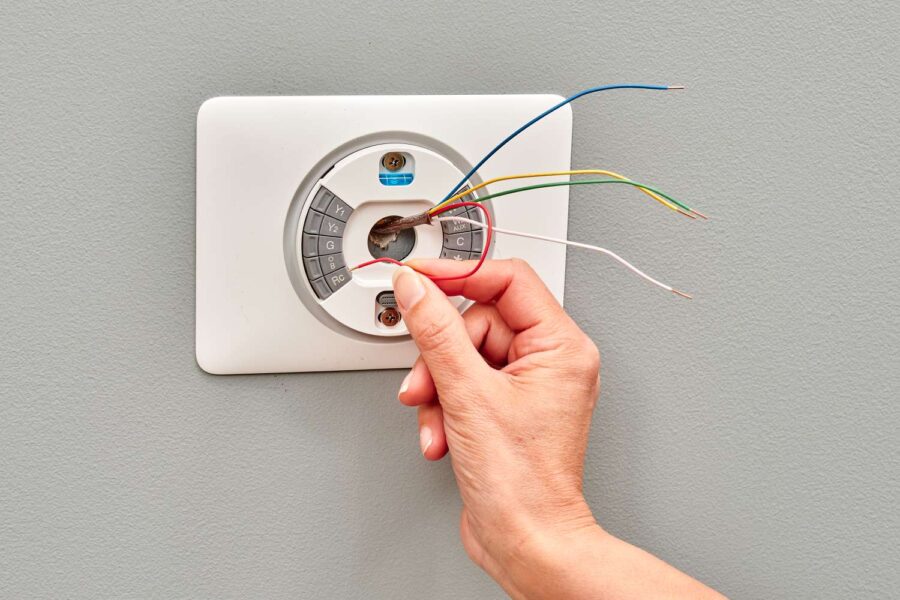
Installing a smart thermostat can be a straightforward process, even if you’re not particularly handy. Most modern thermostats are compatible with multi-stage heating and cooling systems, making them versatile for various setups. Here’s a step-by-step guide to help you through the installation process and ensure everything runs smoothly.
Preparation
- Turn Off Power: Before you start, turn off the power to your HVAC system at the breaker box to ensure safety.
- Gather Tools and Materials: You’ll need a screwdriver, drill (if necessary), and possibly some wire connectors.
- Understand Your System: Identify the type of heating and cooling system you have. This will help during the setup process. Common systems include single-stage, multi-stage, heat pumps, and more.
Removing the Old Thermostat
- Take Note of Wiring: Carefully remove the old thermostat’s cover and note the wiring configuration. Take a photo to use as a reference.
- Label Wires: Use labels to mark each wire according to its terminal designation on the old thermostat. This will make reconnecting them to the new thermostat easier.
Installing the New Smart Thermostat
- Attach the Base Plate: Follow the manufacturer’s instructions to attach the base plate of the new thermostat to the wall. Use a level to ensure it’s straight, and mark holes for drilling if needed.
- Connect Wires: Connect the wires to the corresponding terminals on the new thermostat’s base. Refer to your photo and labels for accuracy. Ensure each wire is securely connected.
- Attach the Thermostat: Once the base is secured and wires are connected, snap or screw the thermostat unit onto the base.
Special Considerations
- C-Wire Requirement: Some smart thermostats require a C-wire (common wire) for power. If your system doesn’t have a C-wire, you may need to install one or use a C-wire adapter kit provided by the manufacturer. Check your system and the thermostat’s requirements before proceeding.
- Compatibility with Other Devices: If you want to control additional devices such as whole-house dehumidifiers, heat pumps, or ventilation systems, ensure that your thermostat supports these features. Consult the manufacturer’s specifications.
Final Steps
- Restore Power: Turn the power back on at the breaker box and test your HVAC system to ensure it’s working correctly with the new thermostat.
- Follow Setup Instructions: Follow the manufacturer’s setup instructions to configure your thermostat. This usually involves connecting to Wi-Fi, creating an account on the thermostat’s app, and setting your preferences.
- Ensure Strong Wi-Fi: Smart thermostats rely on a strong Wi-Fi signal to function optimally. Make sure your router is close enough to the thermostat, or consider using a Wi-Fi extender if necessary.
Professional Assistance
For those with complex, multi-component HVAC systems, or if you’re unsure about handling electrical wiring, it’s advisable to hire a professional. A certified HVAC technician can ensure that your thermostat is installed correctly and safely.
Troubleshooting
- Check Connections: If your thermostat isn’t working correctly after installation, double-check all wire connections to ensure they are secure and correctly placed.
- Verify Wi-Fi: Poor Wi-Fi connectivity can affect the functionality of your smart thermostat. Ensure your network is strong and stable.
- Consult Support: If issues persist, consult the manufacturer’s support or refer to online resources and forums for troubleshooting tips.
Potential Challenges and Considerations
While smart thermostats offer numerous benefits, there are some potential challenges and considerations to keep in mind:
- Initial Cost: Smart thermostats are generally more expensive than traditional thermostats. However, the energy savings over time can offset the initial investment.
- Compatibility Issues: Not all HVAC systems are compatible with smart thermostats, especially older systems. It’s essential to check compatibility before purchasing.
- Complexity: Some users may find the setup process and advanced features overwhelming. Fortunately, most manufacturers provide comprehensive guides and customer support to assist with installation and use.
- Reliance on Wi-Fi: Smart thermostats rely on a stable Wi-Fi connection to function optimally. In areas with unreliable internet service, this could be a limitation.
- Privacy Concerns: As with any internet-connected device, there are potential privacy concerns. It’s crucial to understand how your data is being used and to choose a reputable manufacturer with strong privacy policies.
Conclusion
Smart thermostats represent a significant advancement in home climate control technology. By offering features like learning algorithms, remote access, energy usage reports, and integration with smart home systems, they provide enhanced comfort, energy efficiency, and cost savings. While there are initial costs and potential challenges, the long-term benefits make smart thermostats a worthwhile investment for homeowners looking to modernize their homes and reduce their environmental impact.
As technology continues to evolve, smart thermostats will become even more sophisticated, playing a crucial role in the smart homes of the future. Whether you’re looking to save on energy bills, reduce your carbon footprint, or simply enjoy a more comfortable living environment, a smart thermostat is an intelligent choice for the modern home.

